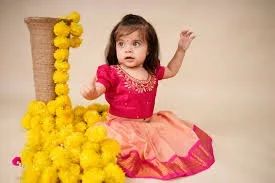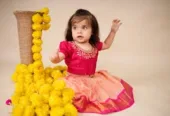Exploring the Art and Impact of Textures in Modern Design
In the world of art, fashion, architecture, and interior design, Textures play a pivotal role in enhancing visual appeal and sensory experience. Whether it’s the soft weave of a fabric, the roughness of a stone wall, or the glossy surface of a ceramic tile, textures define how materials look and feel. Their presence creates depth, contrast, and mood, making them a vital element in both functional and aesthetic design.
From ancient civilizations to contemporary design studios, Textures have been used to communicate themes, elevate craftsmanship, and evoke emotions. Artists and designers understand that texture can bring a flat image to life, making it more engaging and expressive. In interiors, for example, the clever use of textured surfaces can transform a plain room into a warm, dynamic, and inviting space.
In the textile and fashion industry, Textures are crucial in creating garments that stand out. A simple fabric like cotton can be elevated through embroidery, pleating, or printing techniques that add tactile interest. Textured fabrics like velvet, jacquard, or crinkled silk have always been preferred for their luxurious feel and visual richness. They give designers the freedom to experiment and consumers a deeper sensory connection with the clothing they wear.
Similarly, in the field of architecture and interior design, Textures help shape the atmosphere of a space. A rough brick wall may convey rustic charm, while a sleek marble countertop exudes sophistication. Designers use a combination of smooth, coarse, matte, and glossy finishes to create balanced environments. Through thoughtful use of textures, even minimalistic spaces can feel alive and multi-dimensional.
Digital and graphic design are not untouched by the power of Textures. Although screens are flat, visual textures such as gradients, patterns, and layered elements help create depth and a sense of realism. Whether in websites, packaging, or branding, the incorporation of textures can make designs more memorable and visually impactful. These elements guide the viewer’s eye and establish brand personality.
In photography and art, Textures become focal points that bring images to life. Photographers often capture the intricate surfaces of nature, buildings, or objects to evoke a tactile sensation. The play of light and shadow on textured surfaces adds richness to a photo, conveying emotion and context without words. Similarly, painters use brush techniques and mixed media to achieve stunning textural effects.
Sustainability has brought a new focus to Textures, especially in eco-conscious design. Recycled materials, natural fibers, and organic finishes are gaining popularity for their authentic, imperfect textures. These elements not only support the environment but also add warmth and uniqueness to designs. Whether it’s reclaimed wood, handwoven fabric, or earthen clay, the natural texture speaks volumes about craftsmanship and care.
In the world of product design, Textures influence usability and ergonomics. The grip on a tool, the surface of a smartphone, or the pattern on a kitchen appliance can affect how a product feels in the user’s hand. Designers pay close attention to textural choices to ensure that products are not only functional but also pleasant to use. These subtle details often determine a product’s success in the market.
Textures also play a psychological role in how we perceive objects and spaces. Soft textures can evoke calm and comfort, while rough or sharp textures may stimulate alertness and excitement. This understanding is used strategically in branding, retail, and hospitality industries to shape consumer experiences. For example, a cozy café may use plush upholstery and wooden textures to make visitors feel at home.
In conclusion, Textures are more than just surface details—they are a language of their own. They influence our senses, shape our environments, and define the way we interact with the world around us. As design continues to evolve, the importance of textures will only grow, offering limitless possibilities for creativity, innovation, and expression. Whether you are designing a product, a home, or a visual campaign, the right use of textures can be the key to making your creation truly memorable.
Features:
- Sustainable Ladies, Mens Kidswear, Recycled Pet Swimwear




